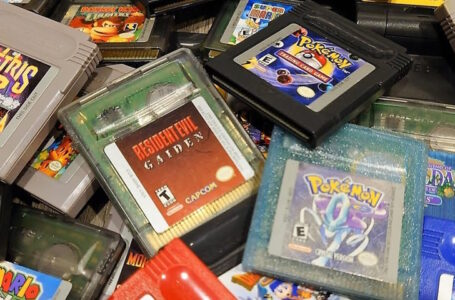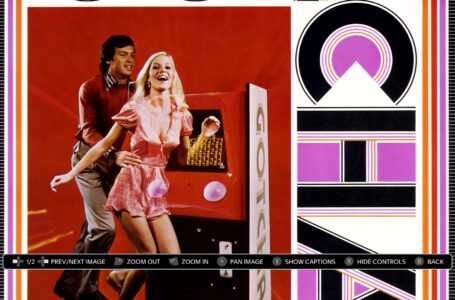The A500 Mini: making the underappreciated side of retro gaming more accessible
As a British man of a certain age, my nostalgia for retro gaming is arguably more in the sphere of home computer games than console games. Don’t get me wrong, I love a bit of NES and SNES action — particularly as I only had limited access to both as a youngster — but if you really want to tickle my nostalgia buds, show me stuff like the ZX Spectrum, Commodore 64 and Amiga. As such, I was extremely excited when The A500 Mini was announced, since it’s a tiny Amiga.
For the unfamiliar, the Commodore Amiga was one of two 16-bit home computers that were prevalent from the mid ’80s to the early ’90s, particularly in Europe. For many years, you were considerably more likely to find an Amiga (or its rival the Atari ST) in the home of computer and video game enthusiasts than a Sega or Nintendo console, particularly in the UK. This was at least partly because the previous 8-bit generation of home computers, including the aforementioned Commodore 64, ZX Spectrum and Atari 8-bit platforms had made home computing affordable as well as kicking off a generation of “bedroom programmers”.
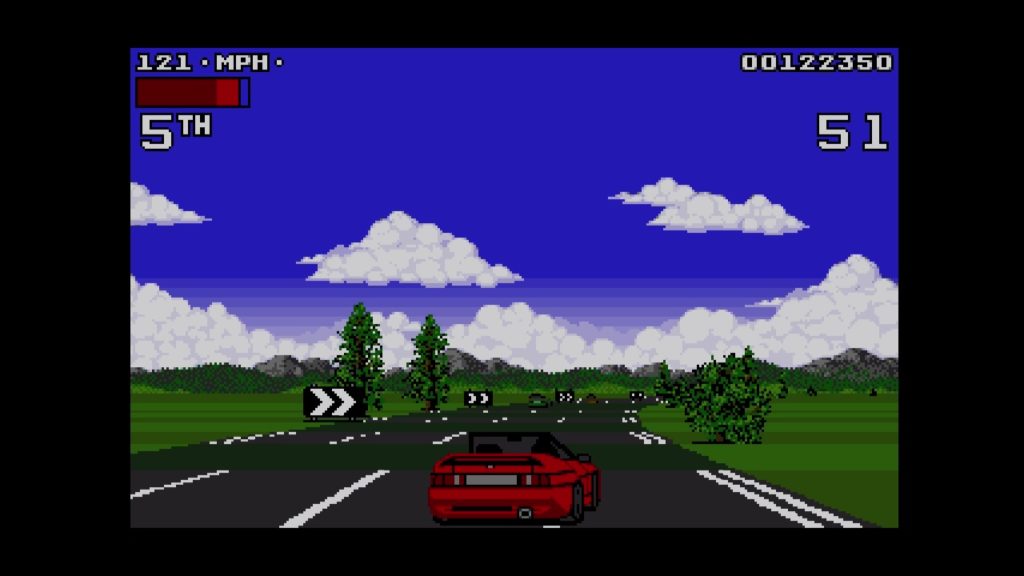
Of the two 16-bit home platforms, the Amiga tended to come out on top when it came to games, as its graphics and sound hardware was superior to the Atari ST. The ST, meanwhile, went on to become the machine of choice for musicians — some musicians still use the ST’s formidable MIDI capabilities to this day! — and productive pursuits such as desktop publishing. Despite their variance in capabilities, both played host to a variety of excellent games — including both home-grown original titles and conversions of popular arcade games.
The A500 Mini doesn’t provide a full Amiga experience right out of the box, but that’s fine. What it does offer you is 25 built-in games drawn from the Amiga’s extensive back catalogue plus, unusually for one of these “mini” systems, the ability to load your own software onto it via a USB flash drive, thereby effectively allowing it to become a repository for pretty much every piece of Amiga software ever, should you desire it to be.
Hardware-wise, The A500 Mini takes the form of a small scale model of an Amiga 500, the most widespread, common and affordable (but least powerful) computer from the Amiga range. Approximately half the size of a real Amiga and sporting an “A500” logo rather than the original “AMIGA” branding, the actual console is mostly non-functional, though in a nice touch it has authentic LED lights for both the system power and disk access indicators, with the latter lighting up when an external USB drive is being accessed.
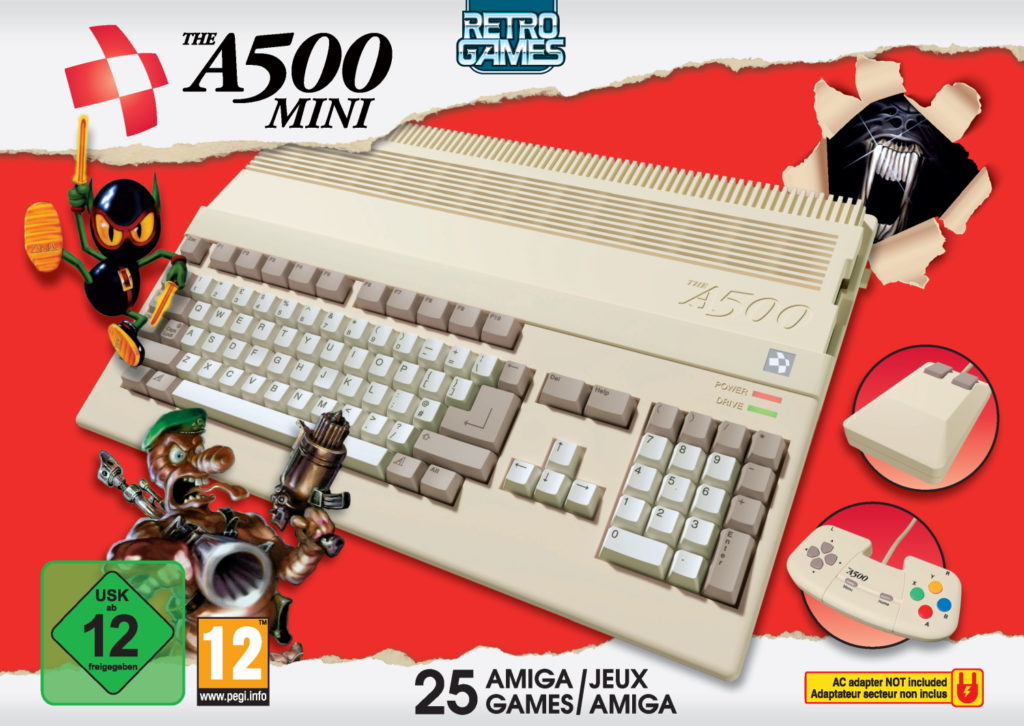
Despite not actually being functional, the model is very nice indeed, with the authentic dirty beige colouring and the keyboard recreated in loving detail. There’s even a convincing looking floppy disk drive down the side, as well as the distinctive grilles on top of the console itself. The only part of the system that is non-authentic is the back; a scale model of the Amiga’s real ports has been omitted to make room for three full-size USB ports, an HDMI port, a USB-C port for power — a cable is provided, but not a power adapter — and the power button itself.
Also in the bundle is a joypad modelled loosely on the awful CD32 controller (but actually made to be extremely comfortable and well-made, aside from a slightly squishy D-pad) and a USB mouse modelled on the classic “tank” model of two-button mouse that came with real Amigas. Thankfully, the mouse is an optical one rather than an authentic ball model — some tech is best left in the past.
Getting the system set up is simplicity. Hook up the cables, turn it on, answer a couple of questions and you’re away. The system supports several different languages and will also run in either 50Hz or 60Hz mode; unlike most other retro system, where 60Hz is preferable, the fact that the vast majority of Amiga software was developed in Europe means that 50Hz is actually the option you should plump for if your TV supports it, otherwise most things will run a little too fast and may not look quite right.
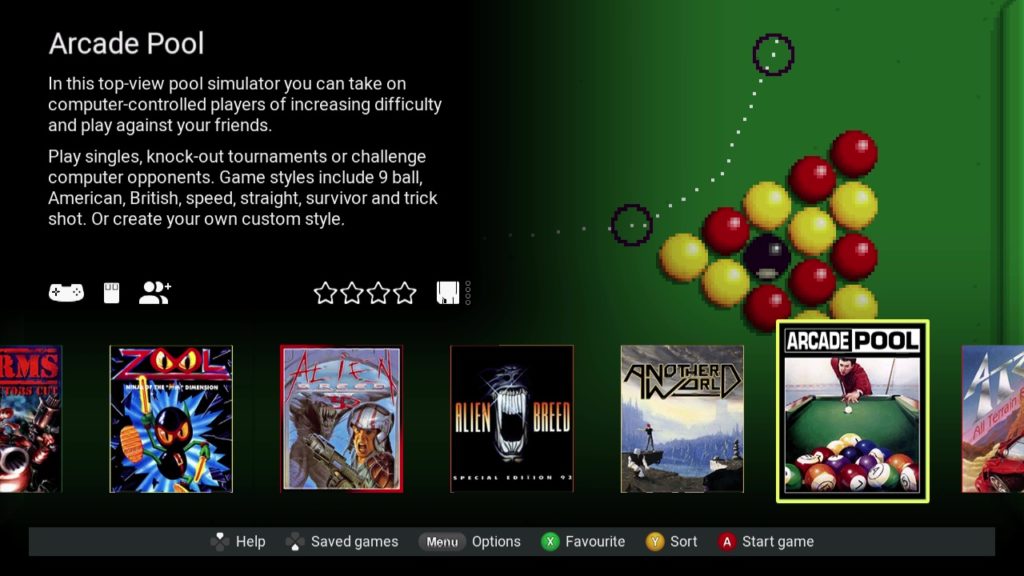
Once you’ve turned the system on, you’re taken to the carousel of 25 included games, and it’s an interesting lineup to be sure. Rather than focusing exclusively on big hitters or games that can be played in better forms elsewhere, the built-in lineup of games on The A500 Mini acts as a cross-section of games that showcase what the experience of being a home computer game enthusiast would have been like throughout the late ’80s and early ’90s.
To that end, we have a number of titles that while not necessarily gobsmackingly spectacular from a technical perspective, they will doubtless elicit some fond memories from someone — and moreover, they demonstrate how home computer games had the flexibility to be a lot more complex and ambitious than console games of the period, particularly as they weren’t beholden to a hardware manufacturer to approve their subject matter.
Take something like Lost Patrol, for example. This is a game set during the Vietnam War, in which you play a small group of soldiers attempting to escape the warzone and make it home alive. Much of the game involves moving a little dot around on a map, occasionally engaging in minigames and ogling beautiful artwork. It’s absolutely not the sort of thing you’d see on a console of the era — and absolutely not a game everyone will get along with — but it absolutely is a perfect example of what “an Amiga game” looks like.
Elsewhere we have full-on flight sim F-16 Combat Pilot from Digital Integration, renowned as one of the most realistic simulations of the classic “Fighting Falcon” aircraft from the era. It was exceedingly ambitious to include this as a game compatible with the included 6-button joypad — and the default mappings do a reasonable job of giving you access to all the functions — though thankfully you can use one of those three USB ports to plug in a functional keyboard, should you so desire; alternatively, there is also an on-screen keyboard option.
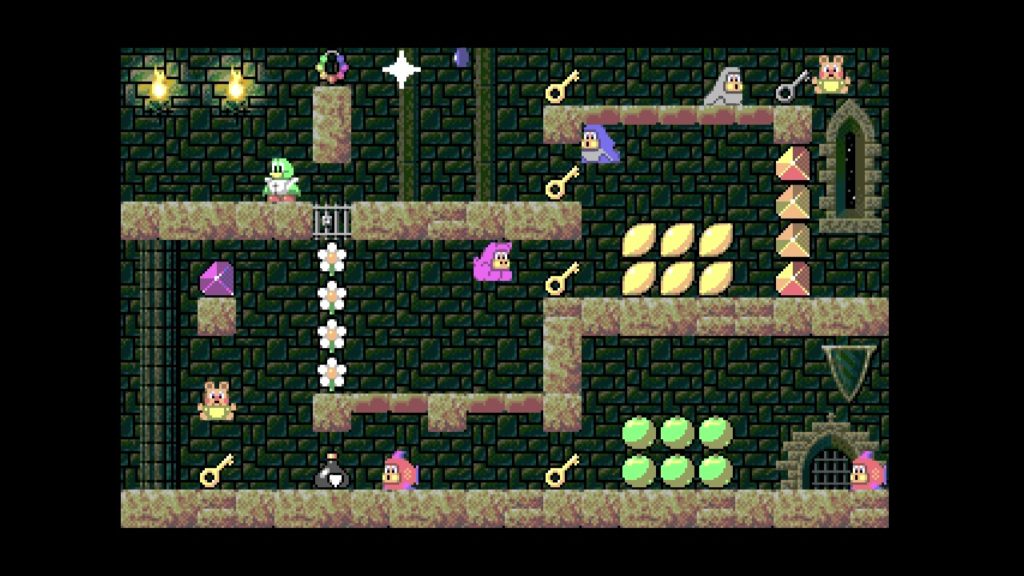
There’s a significant number of Team 17 games on The A500 Mini, including Worms, Arcade Pool, Alien Breed, Qwak and Project X; this makes a lot of sense, since Team 17 quickly established themselves as a group who were capable of getting the very best out of the Amiga — indeed, their games are among the most impressive on the system.
To go through all the games individually is a little beyond the scope of this article — we’ll perhaps spend some time looking at each in a bit more detail in the coming weeks — but suffice to say there’s a really interesting selection here, covering everything from frantic arcade action to synapse-stimulating strategic challenges. It really does demonstrate the diversity of the Amiga’s library extremely well — and while there are less obvious “must-play” titles here, particularly if you’re new to the Amiga, familiarising yourself with all of them will give you a good understanding of late ’80s and early ’90s gaming in Europe.
Emulation quality is excellent, as you would hope from a dedicated system like this. The A500 Mini can happily cope with everything from the OCS (“Original Chip Set”) Amigas such as the original Amiga 500 up to more modern hardware such as the CD32 console, the ECS (“Enhanced Chip Set”) of later Amigas and the AGA (“Advanced Graphics Architecture” of the powerful Amiga 1200). Frame rates are authentic to the original software — which is to say somewhat variable; this wasn’t a console, remember! — and sound output is excellent.
The built-in games have a few options you can tinker with. Three scaling options allow you to play in a small, authentic resolution window, use integer scaling for a larger image without distorted or shimmering pixels, or scale up to the full screen height. There are also options for CRT filters and scanlines, but if you use those you’re a monster.
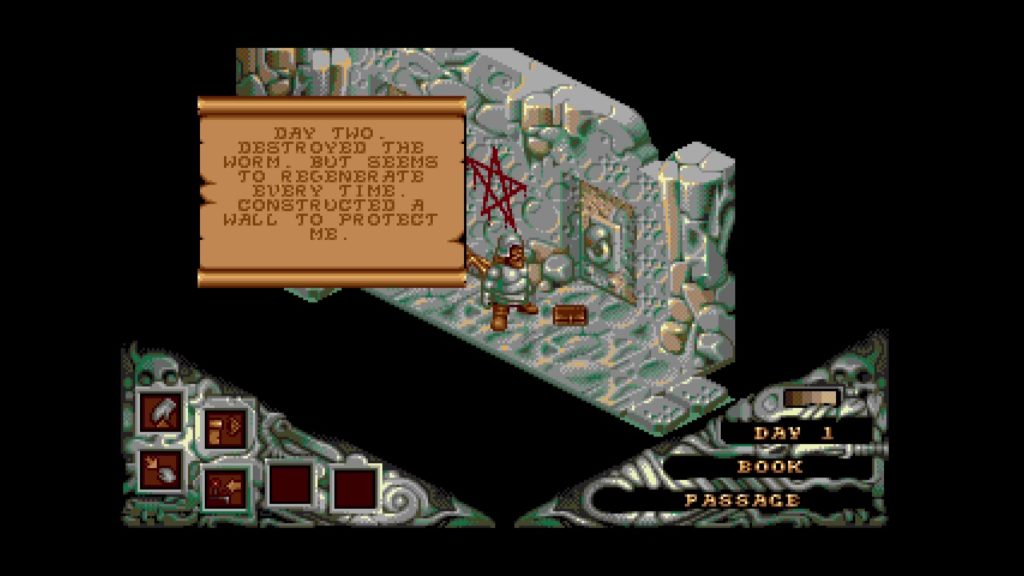
Each game also has four save state slots, allowing you to leave a game and pick it up later or simply save your high scores; this also means you don’t have to worry about swapping virtual disks to save your game in titles like The Bitmap Brothers’ isometric adventure Cadaver. It may detract a little from the authenticity of the experience, but it’s a damn sight more convenient.
Loading your own games onto The A500 Mini takes a little bit of work. Firstly, you’ll need to download a special package from The A500 Mini’s website and load it onto a FAT32-formatted USB stick. Then you’ll need to put your games in WHDLoad format, archived as .LHA files, onto the USB stick. And then you’ll likely need to tinker with each of them to get them looking and running properly.
For those unfamiliar, WHDLoad is a system developed to archive Amiga games. Essentially, WHDLoad archives are a virtual “hard drive install” (hence the “HD” bit) of an Amiga game, including all the content from the floppy disks the games would have originally been distributed on. By packing everything required for a WHDLoad install into a single .LHA file (an Amiga-compatible equivalent of a .zip file) it becomes very easy to distribute and archive Amiga games, regardless of how many floppy disks they originally came on.
There is an extremely active Amiga software preservation community online, so you can find pretty much any piece of Amiga software you’d care to mention in WHDLoad format ready to plop on your A500 Mini. There are even FTP sites and torrents out there full of convenient “complete” archives in WHDLoad format; these are, as always, somewhat legal grey areas when it comes to copyright issues, so take care when browsing and downloading.
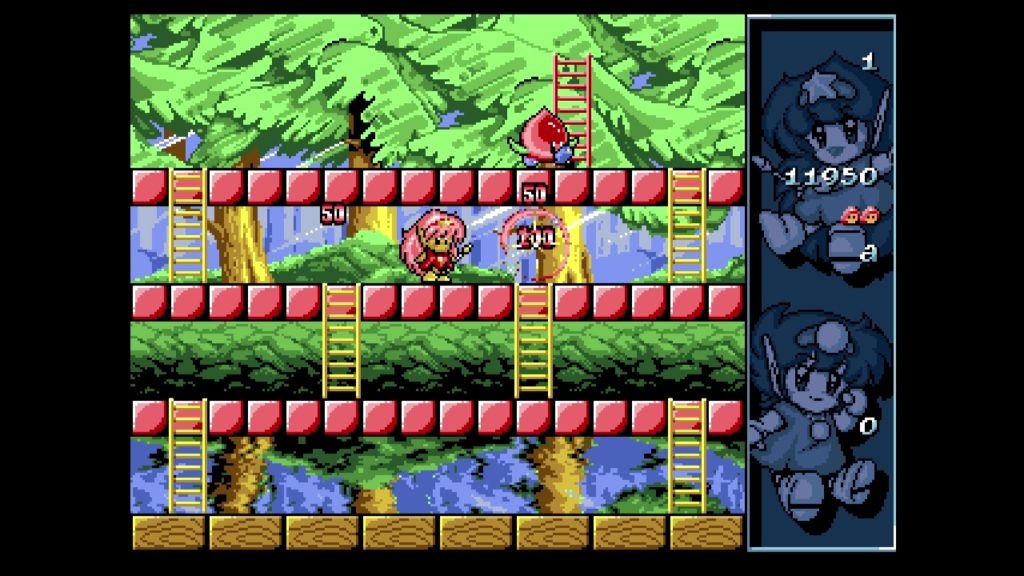
One thing to note is that by default, a significant number of WHDLoad titles will run much too fast without configuring them. This is because they seem to default to a speedy virtual clock speed, and a lot of games work on the assumption that they will be running on the original Amiga processor at a specific speed. To fix this, you need to stick your USB stick in a computer and edit the .uae configuration files The A500 Mini generates to include the line “cpu_speed=real”. This is obviously a pain if you have several thousand Amiga games to do this for, but there are workarounds.
This issue aside, emulation of Amiga games that are not included by default on The A500 Mini is very good for the most part. You’ll often need to tinker with crop and vertical offset settings to make them look just right on your TV, but you only have to take care of this once. The odd game exhibits graphical glitches — I was unable to get Chase H.Q. II: Special Criminal Investigation working quite right, for example — but most of these can be resolved with a bit of tweaking of the settings.
All your WHDLoad games also support save states and custom controller mapping, too, so even if you have a fairly keyboard-heavy game you can map up to two sets of controls to a single controller, with one of those buttons being reserved as a “shift” key to switch between the two sets. Alternatively, you can, of course, hook up a USB keyboard — though this does mean you’ll have to take out either the mouse or the joypad if you want to keep your USB drive attached. A fourth USB port certainly wouldn’t have gone amiss, though you can always resort to a (powered) external hub if required.
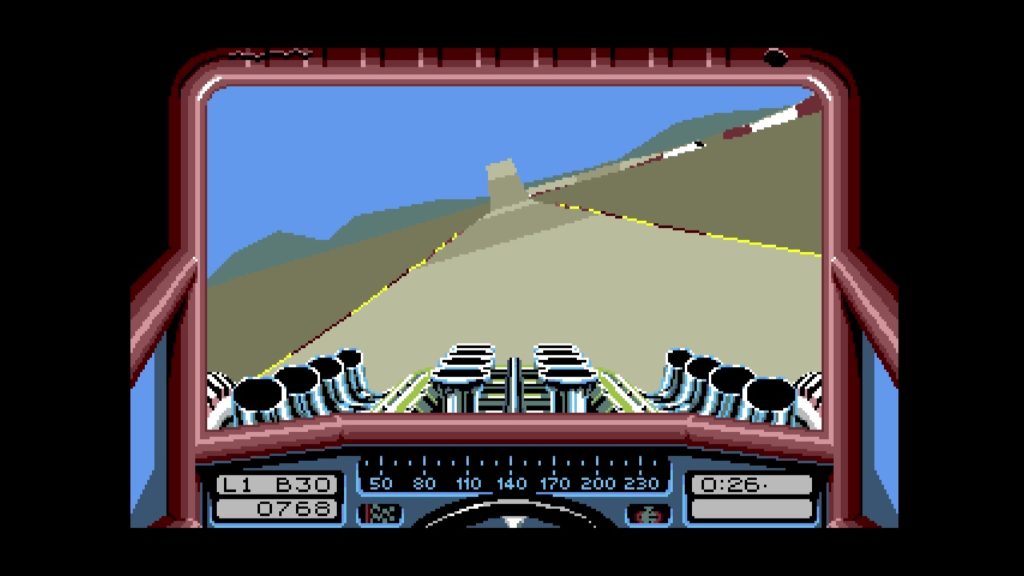
All in all, The A500 Mini is an excellent piece of kit that makes getting into the world of Amiga gaming an absolute breeze, so long as you’re willing to get your hands a little dirty when first setting everything up. The included games offer a great selection of entertaining experiences, most of which still hold up very well today, and the WHDLoad compatibility means that your options are only limited by the size of the entire Amiga library as it exists today. And it’s pretty damn large, I can tell you now.
At this point, I feel like my A500 Mini is going to become my most-used mini console, simply because it provides such a flexible experience that I can’t easily get somewhere else. Yes, I could set up an Amiga emulator on my PC — but there’s something indescribably magical about using a dedicated device designed specifically for nothing but doing Amiga things. It may not be “original hardware”, but at this point, it’s absolutely the next best thing.
The A500 Mini is available now from various retailers, including Amazon. Expect to pay £100-£120 or so.
Join The Discussion
Rice Digital Discord
Rice Digital Twitter
Rice Digital Facebook
Or write us a letter for the Rice Digital Friday Letters Page by clicking here!
Disclosure: Some links in this article may be affiliate links, which means we may earn a small commission if you make a purchase after clicking on them. This is at no additional cost to you and helps support Rice Digital!
- Letter from the Editor: passing the torch - June 30, 2023
- Super Woden GP 2 is looking promising - June 30, 2023
- Inti Creates is making a 32 bit-style Love Live action platformer - June 26, 2023




